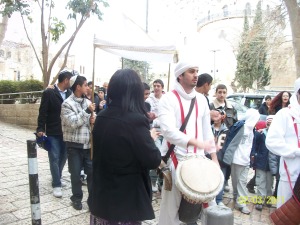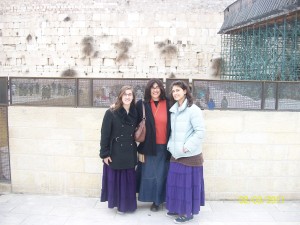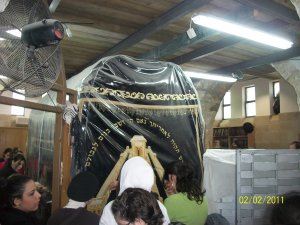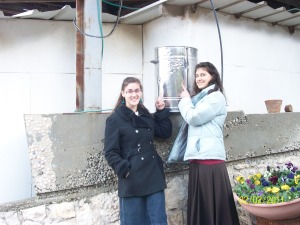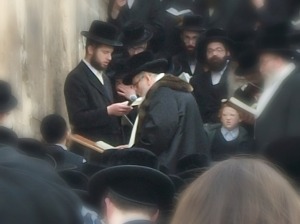>>I am a new homeschooling mother, having just begun this year with my 3 boys – ages 6, 5 and 16 months. Our reasons for homeschooling were to be able to address social/emotional issues – to raise our children with manners, respect, good communication skills and having positive relationships that we felt we were unable to accomplish satisfactorily while they were in a school setting. On that front, my husband and I are both amazed at the changes we have seen in just these 3-4 short months.<<
How exciting!
>>However, now that I feel like we are on the right track with our overall goal, I need to focus on the academics/learning goals. But I am getting stuck. The idea of letting kids learn at their own pace, when they are developmentally ready for it, is one that (at least, theoretically) I believe in. But practically, how do I become confident enough to say that its ok for my 5 year old to not begin reading Hebrew if he’s not ready for it? And I know that he’s not ready because every session ends in tears. Then I get frustrated that maybe I am not a good enough teacher, that maybe a different method would work better and I end up getting upset at him for not being able to ‘get’ it. <<
It’s challenging when your heart and your head are giving you different messages! It sounds to me like this is about being afraid that you’re going to fail your son, and that somehow you’re inadequate. When a child isn’t ready, it doesn’t matter how well you present the material – so this isn’t about you not being enough. It’s about your son not yet being ready to learn to read.
Since you didn’t tell me how you handle teaching reading, I’m going to assume that you follow a traditional drill approach. ‘Drill and kill’ hasn’t been termed in this way for nothing! Perhaps as you step back from systematically teaching him to read, you can instead look for ways to play with letters/words with him. There are flashcards of the alphabet that you can get to play matching games with, cookie cutters in letter shapes to use to bake with – you don’t even need cookie cutters – you can give him some bread dough next time you’re baking and let him form the letters of his name or another word that he wants to make, talking about the sounds of the letters as you go along. There are a couple of online sites that I’ve never used but have seen recommended for teaching Hebrew reading. (Readers, please share your resources in the comments section below!)
The goal isn’t to make him learn, but to a) refrain from demotivating him by pushing him too soon for something he’s not ready for, and b) show him that things connected to reading are fun so that his intrinsic desire to learn is enhanced! With time he’ll make the connection to reading being fun. Here are some past posts that may shed some additional light on how I handle this.
http://oceansofjoy.wordpress.com/2010/12/29/reading-readiness-activities/
http://oceansofjoy.wordpress.com/2009/10/27/waiting-for-interest-the-early-years/
http://oceansofjoy.wordpress.com/2009/04/23/hebrew-reading-and-writing/
>>My 6 year old learned to read both Hebrew and English in school last year and is progressing well. But he gets upset that he has to do more work than his brother, and if I cut out reading for the younger one, than the older one will be that much more upset. So what should I have the 5 year old do while the 6 y.o. is working at the table?<<
For starters, maybe you can make reading more fun for the older one so the perception that he’s stuck doing the boring stuff while his brother gets to have fun is minimized. It wouldn’t be fair to insist on the younger one having to do something just because his brother doesn’t want to suffer alone! However, the reality is that there are different things expected of different children, and if you’ve made the effort to approach learning in an engaging way in line with their readiness and ability, at that point you can let the boys know this is simply how it is. Kids don’t have to like and approve of all that we do.
>>This brings me to another question: is there such as thing as spending too much time playing lego? The two boys can spend literally hours playing with their legos, and when I try to encourage them to do s/t else – puzzles, art, board games etc. they don’t want to. After their work is done, I allow them to play as much lego as they want, but I don’t want 5 y.o. to play lego while 6 y.o. is working on reading /writing. Am I being reasonable? I tell him to choose a learning game, but he is very resistant.<<
There’s nothing wrong developmentally with spending hours on legos and not wanting to play with other things – it sounds like they’ve found something the really enjoy! But if it’s interfering with the way you want to run the house, then you need to clarify to them what the limits of playing with legos are. You can empathize with their desire to play as often as they want, but at the same time firmly let them know what the parameters for playing with them are. “I know you like playing with the legos because they’re so much fun, and after we finish with xyz, we’ll be able to take them out. Right now we’re doing xyz.”
>>I think a problem I have is that I read many homeschooling blogs and so many describe what their children are learning and the many hours they spend doing it. My 6 y.o. is at the table for maybe 1-1.5 hours total doing workbooks. So I feel inadequate that I am not teaching them enough, especially if I will be laid back with my 5 y.o.’s reading.<<
It can be challenging to read homeschooling blogs and books, to feel inspired or encouraged but not to compare ourselves to those we read about. Realize that you’re only seeing a little slice of life wherever you’re reading; we all have times when children are dragging their feet, aren’t excited about going along with the plan we’ve made up, the house is a mess, and it doesn’t seem like much learning is happening. That’s reality, and no one is exempt. I said to a homeschooling friend recently that when reading homeschooling magazines or books, you could get the impression that most homeschooled kids are doing things like building their own high powered telescopes using scavenged materials during their free time every day!
To me, the power of homeschooling is in much more subtle things than outward accomplishments. It’s about the kind of people your children are developing into, the relationships you establish with them and that they create with one another. It’s about children developing an intrinsic value for learning, that comes in part from having their internal timetable respected and nurtured. It’s about the people they are becoming, not at how early an age they do algebra or if they’re going to impress the neighbors or validate me to others as a good homeschooling mother by virtue of their accomplishments.
>>We do a lot of ‘other’ learning – reading together, cooking and baking, household chores, discussions on science, geography, current events etc. that we all really enjoy, but the table learning is frustrating for all of us. They drag their feet (in some subjects) and want to get back to playing, and I get upset that there isn’t enough formal learning happening. <<
So if they’re learning and everyone is enjoying it, what is the value to you of table learning? Is this what you perceive as ‘real’ learning? Or are there things that they can’t learn any other way that are critical for them to know now? Learning doesn’t have to be formal to be happening; in fact, much of the most powerful learning is informal!
>>It also bothers me that my 6 y.o. was a good student and always did his work easily in school, but now because he has so much more playtime, I feel like he just wants more and more and is resistant to a lot of work.<<
It sounds like you’re afraid that by letting him play more, he’s developing bad habits. If you’re generally an undisciplined person yourself and don’t have expectations of him in any other areas, you’d be right to be concerned. But a six year old wanting to play more and do less of the boring stuff is pretty normal. He did well in a framework where he didn’t have any better choices, but now he has choices and sitting quietly for long periods doesn’t hold up well in comparison!
>>So to sum up, how do I become confident enough to follow my kids’ lead on what is appropriate for them at a certain stage, without worrying about what others are doing, and especially what their class is doing at school? And secondly, how do I make the distinction between when they are not ready for s/t yet, and when they are just dragging their heels because they want to go play?<<
Fear and comparisons to school schedules and other homeschoolers are very common, but they are also paralyzing and keep you from finding the special path that is just right for your family. I think letting go of the worry becomes much easier when you and your husband clarify what your goals in homeschooling your children are, and talk about how to be true to those goals in your day to day approach. When what you do is aligned with your beliefs and values, you’ll naturally be much less concerned about what others are doing/thinking. This takes some time, but it’s very worthwhile, because without a flight plan, how will you know if you’re on target to reach your destination?
Avivah
